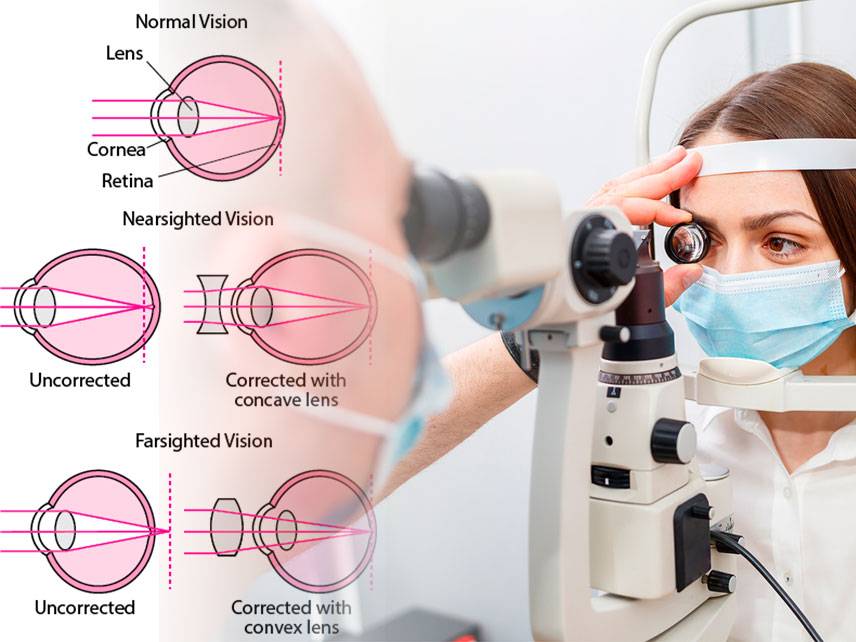Refractive errors are vision problems that occur when the shape of the eye prevents light from focusing correctly on the retina, resulting in blurred vision. Refractive errors are the most common cause of vision problems in the world. They include myopia (nearsightedness), hyperopia (farsightedness), astigmatism, and presbyopia.
Signs and Symptoms
Common symptoms of refractive errors include blurred vision, difficulty seeing distant objects, headaches, eyestrain, and squinting.
Causes
Refractive errors are caused by the shape of the eye. The eyeball is usually slightly curved, but sometimes it is too long or too short, or the cornea is not curved correctly. These irregularities cause light to be improperly focused on the retina, resulting in blurred vision.
Risk Factors
Certain factors can increase the risk of developing a refractive error, such as family history, age, and lifestyle. People over the age of 40 are more likely to develop presbyopia, and those with a family history of refractive errors may be more likely to develop them. Additionally, lifestyle factors such as smoking and excessive alcohol consumption can increase the risk of developing a refractive error.
Prevention
There is no sure way to prevent refractive errors, but there are steps you can take to reduce your risk. Wearing protective eyewear when playing sports or working with power tools can help protect your eyes from injury. Additionally, eating a healthy diet, exercising regularly, and avoiding smoking and excessive alcohol consumption can help keep your eyes healthy.
Diagnosis
Refractive errors can be diagnosed with a comprehensive eye exam. During the exam, the doctor will measure the curvature of the cornea and the length of the eyeball. They may also use a retinoscope to measure how light is refracted from the eye.
Treatment
The most common treatment for refractive errors is corrective lenses, such as eyeglasses or contact lenses. These lenses help to refocus light onto the retina, resulting in clearer vision. In some cases, surgery may be necessary to correct the shape of the eye.
Coping and Support
If you have been diagnosed with a refractive error, it is important to speak to your doctor about the best ways to manage it. Additionally, there are many support groups available for people with refractive errors. These groups can provide emotional support, resources, and advice.
Complications
If left untreated, refractive errors can lead to a number of complications, such as amblyopia, strabismus, and glaucoma. Additionally, people with untreated refractive errors may have difficulty driving and performing other activities that require good vision.
Living with Refractive Errors
Refractive errors can have a significant impact on a person’s life. It is important to speak to your doctor about the best ways to manage your condition and to seek out support from family and friends. Additionally, wearing protective eyewear and eating a healthy diet can help keep your eyes healthy.
Refractive errors are common vision problems that can have a significant impact on a person’s life. With the right treatment and support, however, people with refractive errors can still enjoy good vision. It is important to speak to your doctor about the best ways to manage your condition and to seek out support from family and friends.





